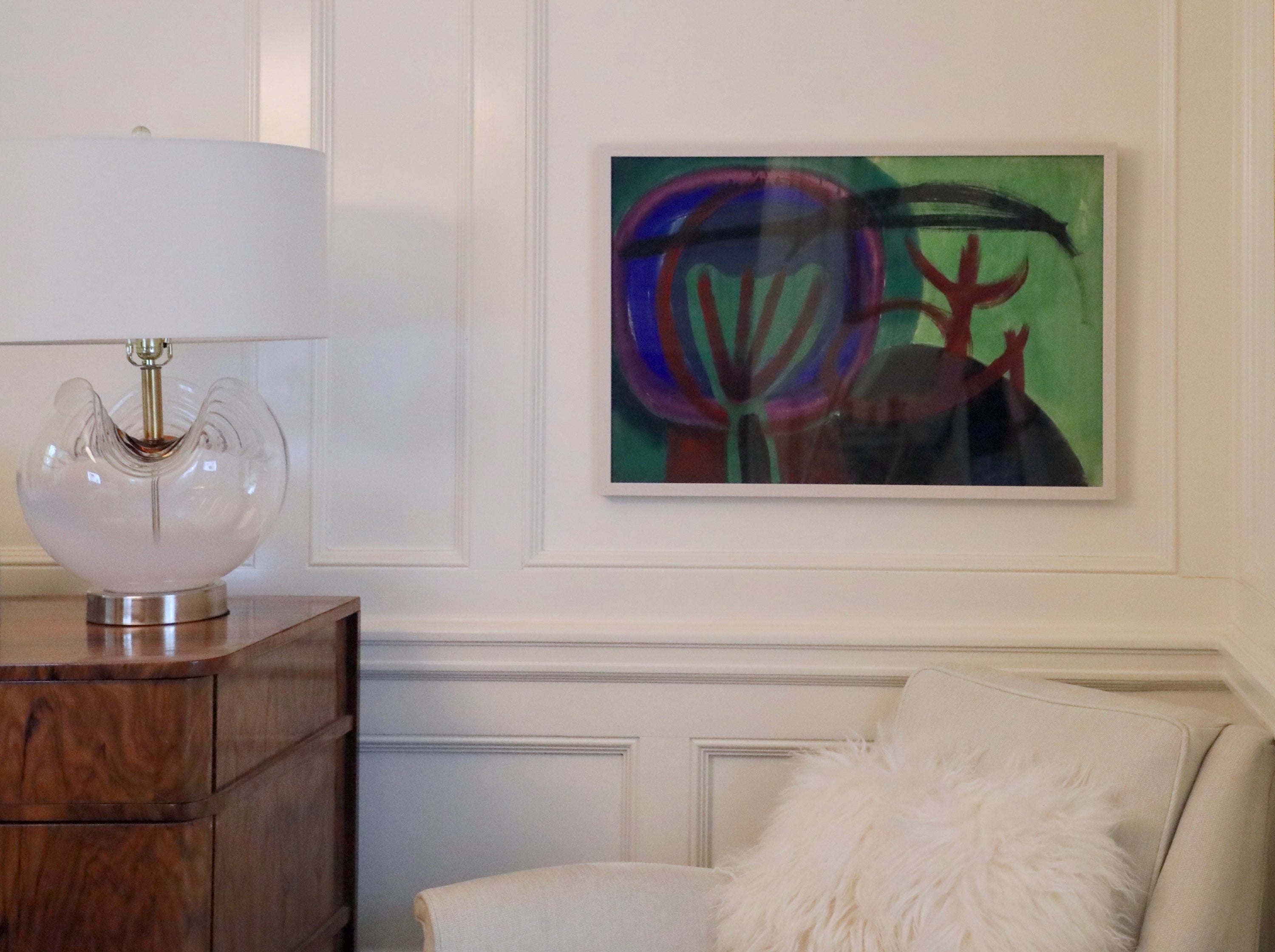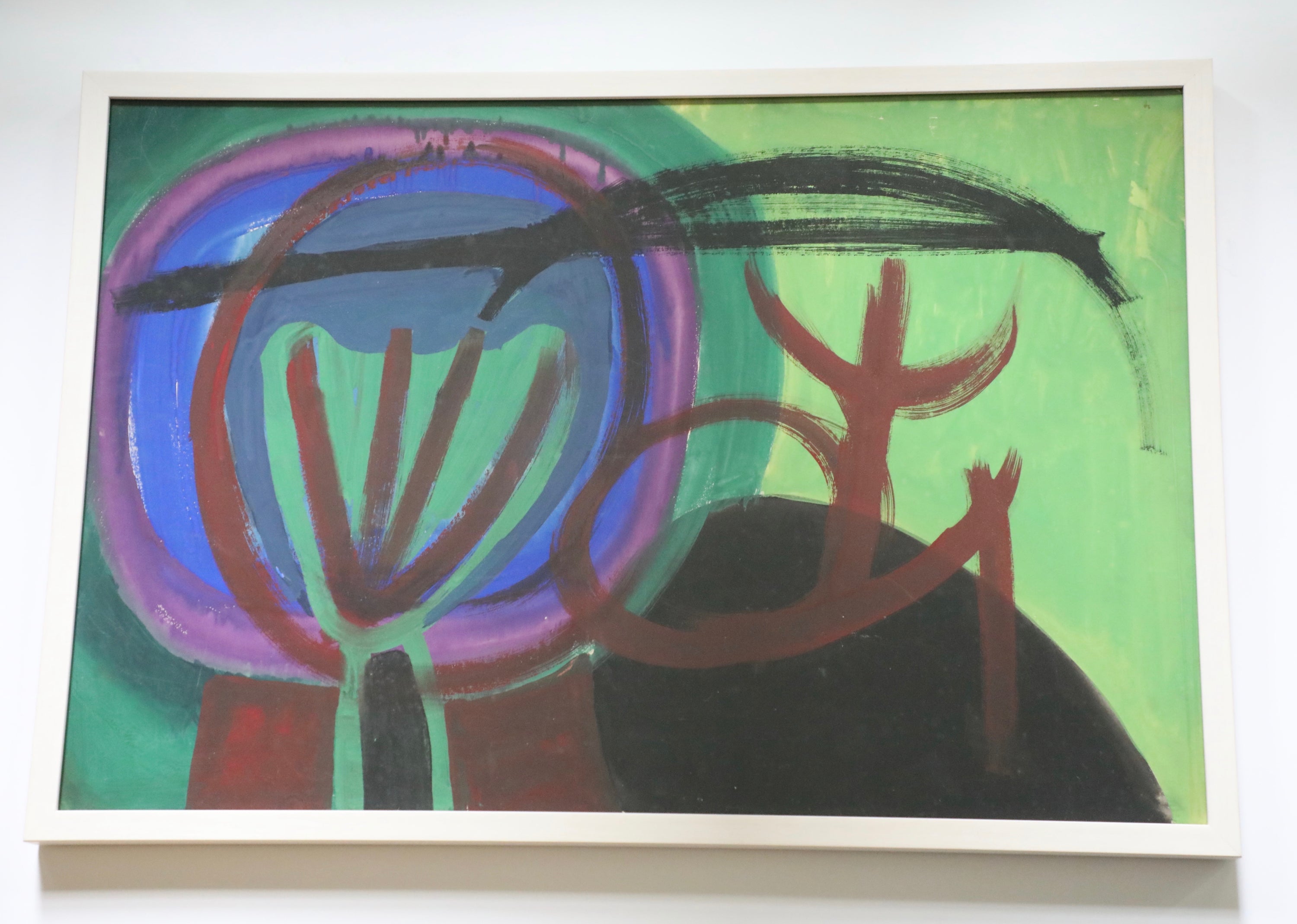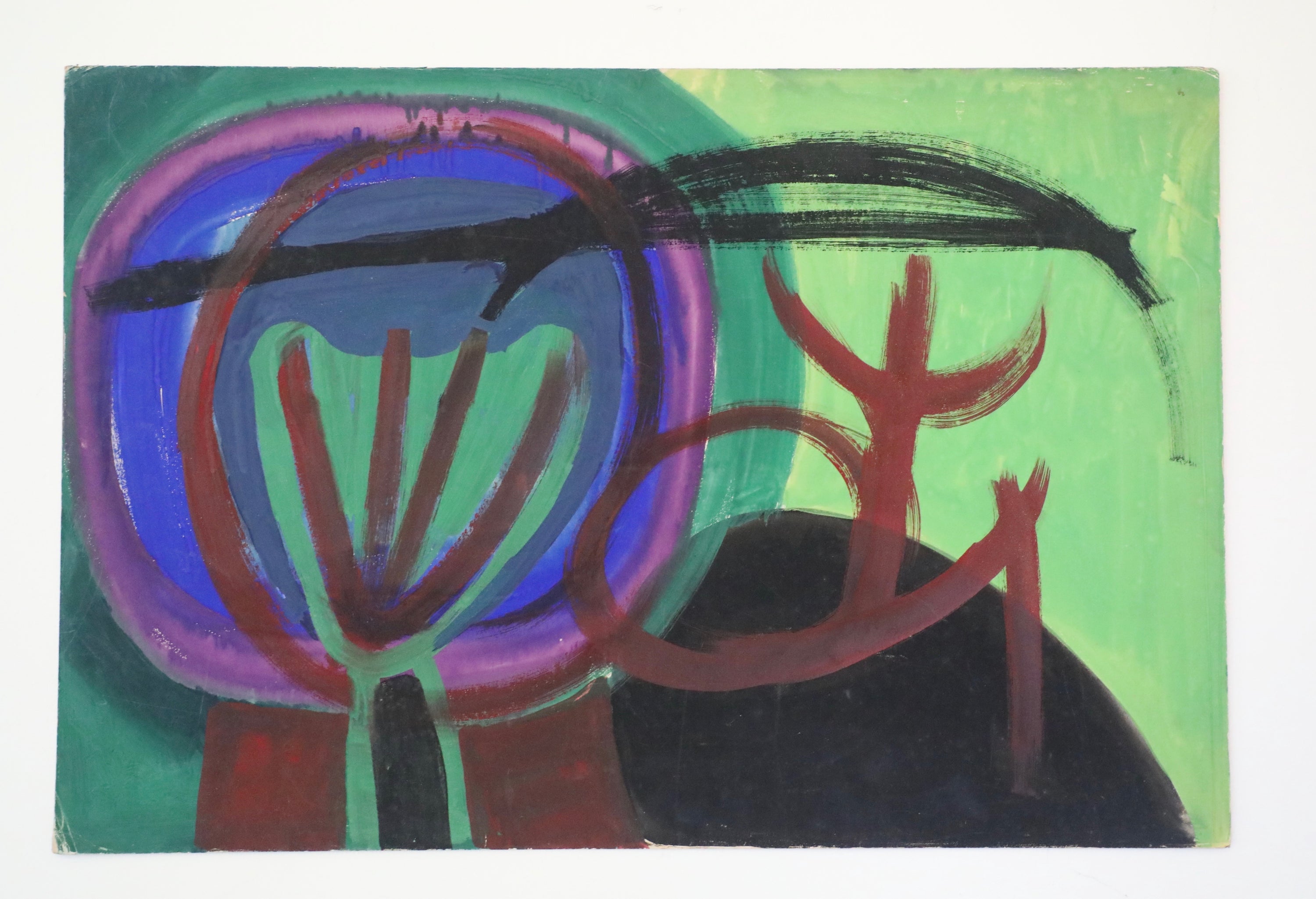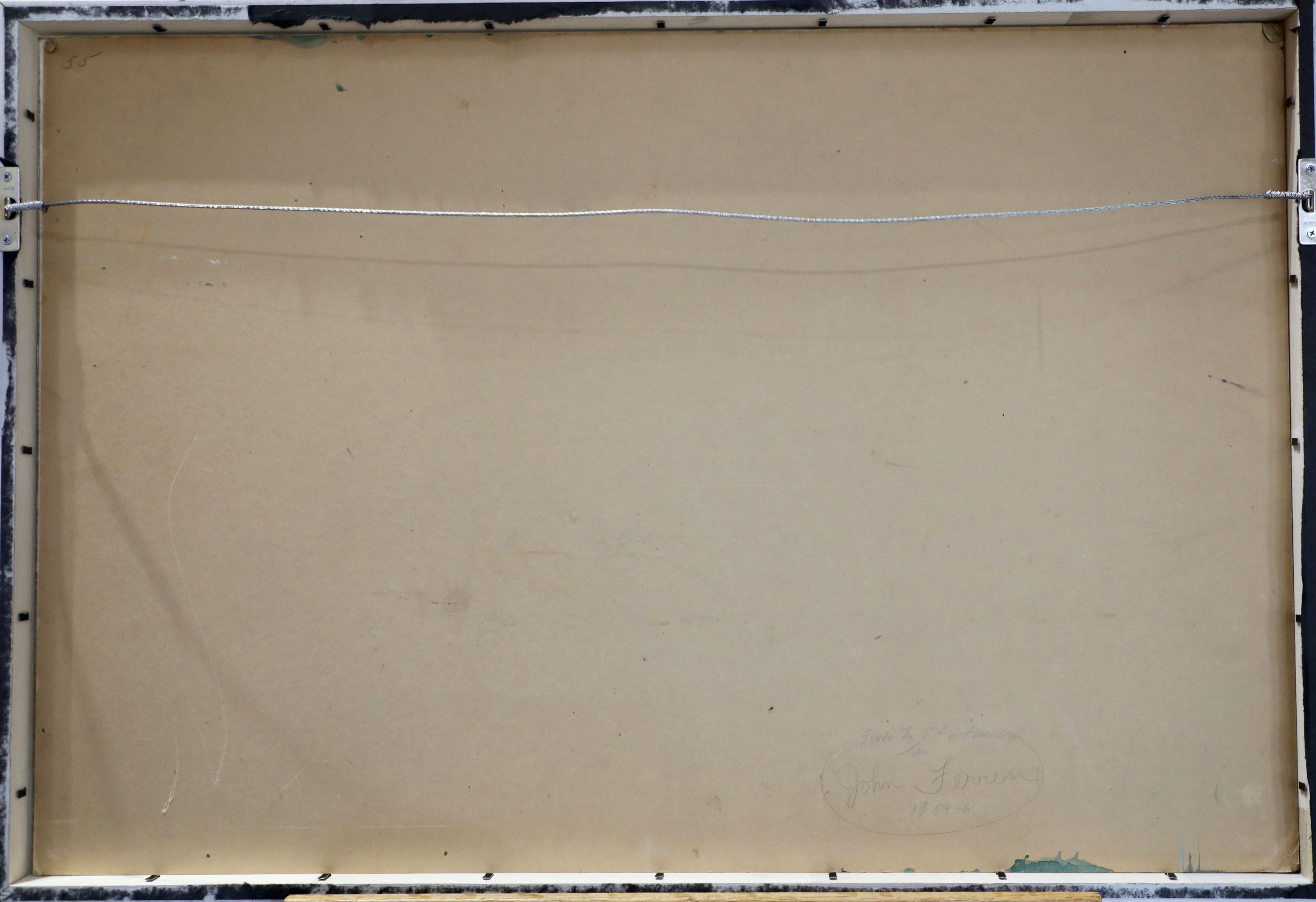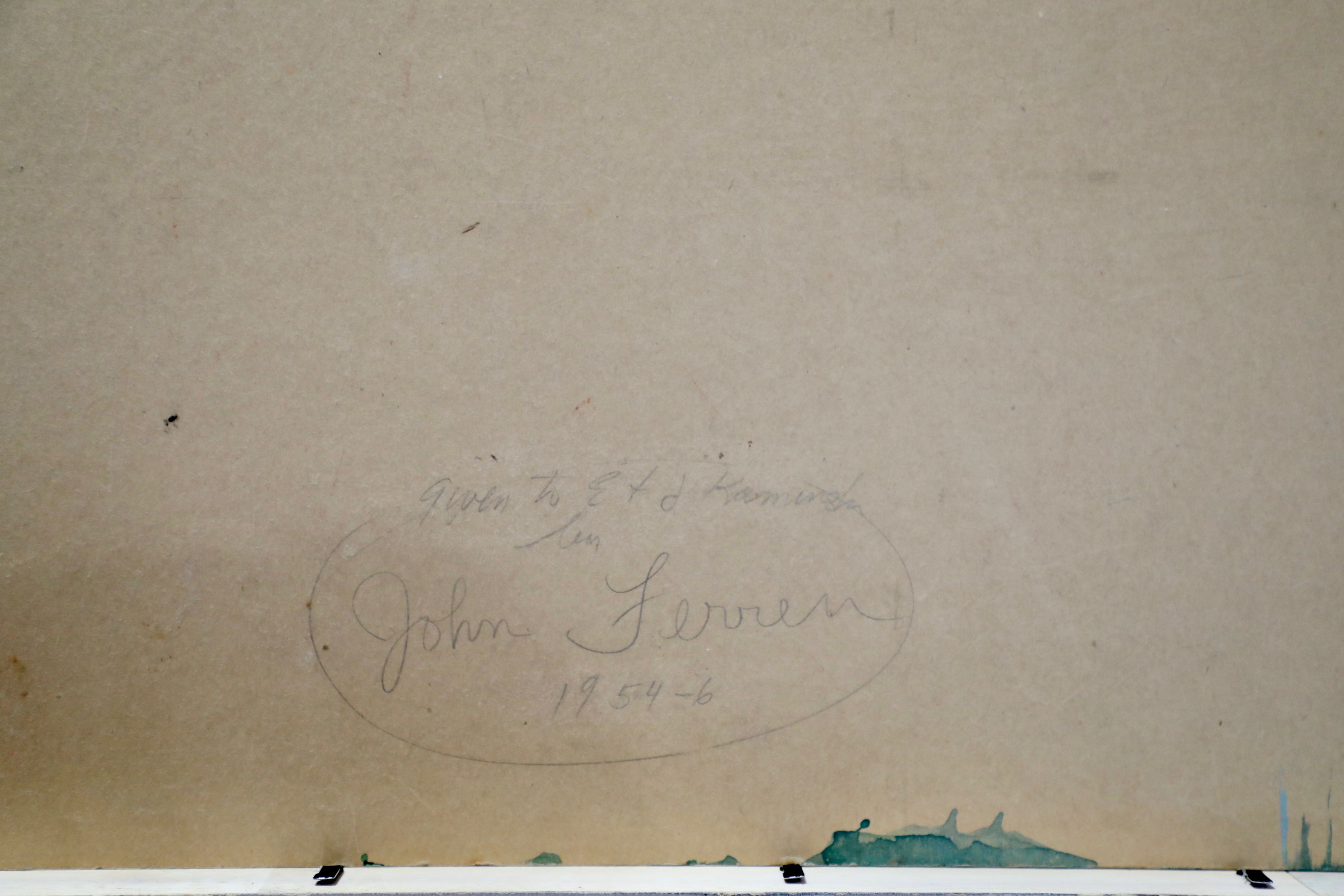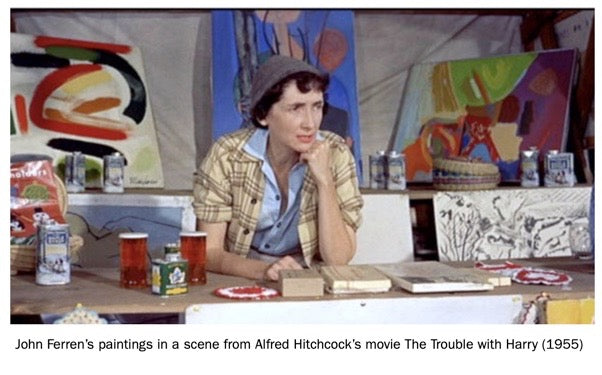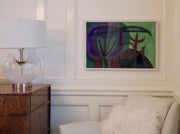John Ferren, Abstract Gouache on Board (1954-1956)
Description
We are pretty darn excited about this one. John Ferren is the man about which Gertrude Stein reputedly said "Ferren ought be a man who is interesting, he is the only American painter foreign painters in Paris consider as a painter and whose paintings interest them. He is young yet and might do ... that thing called abstract painting.” Well, he did do that thing called abstract painting. In a big way. This work is a good example of Ferren's tendency to break away from the typical abstract playbook and created pieces that incorporated figurative elements, geometric abstraction, and an often sculptural quality that stemmed from his earliest training. This piece was one of four that Ferren gifted to his friends and neighbors, Edward and Josefa Kaminski of Los Angeles, California.
Details
- John Ferren (American, 1905-1970)
- Untitled (1954-1956)
- Gouache on board
- Signed and dated on verso
- 21 1/4" x 31" (overall) 19 1/2" x 29" (sight)
- Gouache to corners professionally restored, newly framed under UV plexiglass
About the Artist
Born in Pendleton, Oregon in 1905, Ferren moved to San Francisco as a young man. He briefly attended art school while first working for a company that produced plaster sculpture and then serving as an apprentice to a stonecutter. He apparently made and sold portrait busts during this period. By 1929 he had saved enough money to fulfill his dream of traveling to Europe via a stop in New York to visit Albert Gallatin’s famous art collection (Gallatin would later become one of the first Americans to purchase Ferren’s work).
In Europe, Ferren did not pursue formal art studies, although he sat in on classes at the Sorbonne and attended informal drawing sessions at the Académie Ranson and the Académie de la Grande Chaumière. Instead, Ferren said, he “literally learned art around the café tables in Paris, knowing other artists and talking.” For instance, in Saint-Tropez he met Hans Hofmann, Vaclav Vytlacil, and other Hofmann students. He later met up with them at a Matisse exhibition in Munich, an experience which apparently shifted his interest from sculpture from to painting. After a brief return to California, Ferren spent the pivotal prewar years of 1931 to 1938 in Paris struggling to find his artistic direction. He met and married the daughter of a Spanish artist, Manuel Ortiz de Zarate; through this union he met the circle of Parisian-Spanish painters that included Picasso, Miró and Torres-Garcia. He became quite friendly with Picasso who mentored him, and together they stretched the canvas for Guernica, in 1937.
After his divorce, Ferren returned to New York City. During World War II Ferren served with the Office of War Information in the North African and European theaters. By this time, Ferren had reintroduced the figure into his paintings without giving up abstraction, and following the war he turned to Abstract Expressionism. He participated in the historic 9th Street Art Exhibition of Paintings and Sculpture, the artist-led exhibition that marked the formal debut of abstraction expressionism; and was a founding member of The Club, a group of artists who were at the heart of the emerging New York School of abstract expressionism. In 1955 he became the group’s president. He taught at the Brooklyn Museum School, the Cooper Union, and Queens College. Fun fact: In the 1950s, Ferren collaborated with Alfred Hitchcock on two of his films. For Vertigo, Ferren created the Jimmy Stewart nightmare sequence as well as the portrait of the tragic Carlotta. For The Trouble with Harry, Ferren created artwork for the character of the artist Sam Marlowe played by John Forsythe.
As stated on the Smithsonian American Art Museum’s website:
In moving from geometric abstraction to the academically based figure and still-life paintings he did after the war, and finally to the freely painted expressionist work of his later years, Ferren searched for a way to express moral truth. Throughout his life, he viewed painting as a means of seeking the reality behind appearance. His early appreciation of Kandinsky and a fascination with Zen that dated from his youth helped define the way he thought about painting throughout his life. He called art the “great common denominator between knowledge and insight,” and said it should explore the intuitive—the spiritual, mental, social, or psychological—forces of life.
Ferren’s work is in the collections of MOMA, the Guggenheim, the Metropolitan Museum of Art, the Whitney, the Smithsonian, the Hirshhorn, LACMA, the RISD Museum, and the Peggy Guggenheim Collection in Venice, Italy. Ferren passed away in 1970 in Southampton, NY.
This tab content type will accept rich text to help with adding styles and links to additional pages or content. Use this to add supplementary information to help your buyers.
This tab content type will accept rich text to help with adding styles and links to additional pages or content. Use this to add supplementary information to help your buyers.

